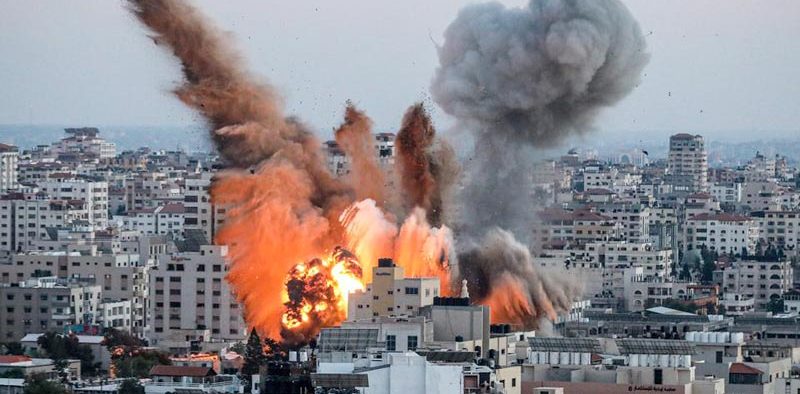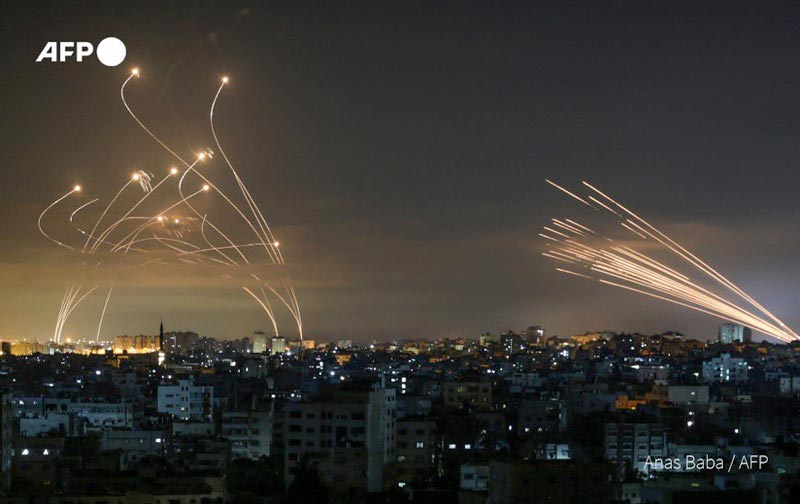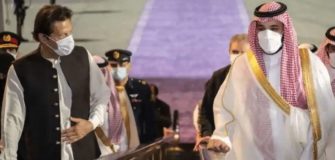Palestinian death toll in Gaza, occupied West Bank mounts

Israel’s bombardment of the Gaza Strip continued for a fifth consecutive day, with Israeli air raids hitting a refugee camp where at least 10 Palestinians, including eight children, were killed.
At least 139 Palestinians, including some 40 children, have been killed in the Gaza Strip since Monday. Some 950 others have been wounded; In the occupied West Bank, Israeli forces have killed at least 13 Palestinians; protesting against continued Israeli occupation and the ongoing bombardment of Gaza; Confrontations between Israeli police and Palestinian demonstrators continued into the night in occupied East Jerusalem.
At least eight people in Israel have also been killed; The Israeli army said hundreds of rockets have been fired from Gaza towards various locations in Israel; and they have added reinforcements near the enclave’s eastern lands. More than 2,000 rockets have been fired at the Jewish state since Monday, killing nine people, including a child and a soldier, with more than 560 people injured; Warning sirens sounded in towns and communities in the early hours of Saturday.
The escalating tensions came as the US secretary for Israel-Palestinian affairs, Hady Amr, arrived in Israel on Friday as part of mediation efforts. Amr will hold talks both with Israeli officials and Palestinian leaders in the West Bank and encourage a “sustainable calm”, state department deputy spokesperson Jalina Porter said.
Egypt was leading regional efforts to secure a ceasefire; and the UN said the security council would meet on Sunday to discuss Gaza.
Fire and fury in Palestine as mounting deaths mark Nakba Day
The Nakba, Arabic for catastrophe, refers to the collective traumatic event that saw 15,000 Palestinians killed and 531 Arab villages destroyed in attacks to make way for the Israeli state.
This year marks the 73rd anniversary of the Nakba, with uncharacteristically higher levels of anti-Palestinian violence than usual.
On May 15, 1948, some 750,000 Palestinians were expelled into refugee camps; that still exist in the West Bank, Gaza, Jordan, Syria, and Lebanon following the creation of the State of Israel in 1948.
To motivate Arabs to leave their land, armed Zionist militias and gangs massacred entire villages of men, women, and children to send a simple message: leave or die. In one since depopulated village, roughly 600 people were attacked by militias with over 100 Palestinians killed; the massacre was pivotal in pushing Palestinians to leave their homes; which was later cited as proof the land was without a people, and therefore ready for settling.
For hundreds of years, Jews and Arabs lived in Palestine as citizens of the Ottoman Empire but that status quo ended in the aftermath of World War I and the establishment of the British Mandate of Palestine.
The Palestinians were to suffer further when the West Bank and Gaza fell to the Israelis during the 1967 war.
Millions of Palestinians, including those displaced with the establishment of Israel; now found themselves having to live under military occupation, as well as further Israeli expansionism in their lands.

Law Student, School of Law, Quaid-I-Azam University, Islamabad









